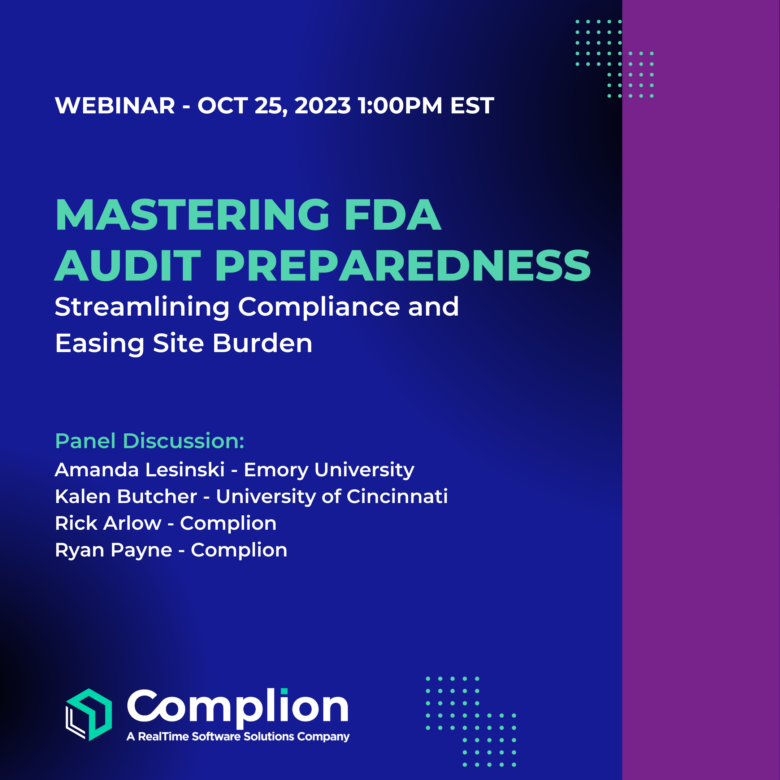The investigator site file (ISF) plays a critical role in a study’s success. But only if the people in charge of it – clinical trial investigators – keep its contents accurate and up to date. In this post, we provide an overview of all essential documentation in an effective, compliant ISF.
Investigators have a few responsibilities. They control the drugs under investigation. They verify informed patient consent. They protect the rights and welfare of the patients under their care. They make sure the study is conducted according to the signed investigator statement, investigational plan and all applicable regulations. And they have to ensure institutional review board (IRB) review, approval and reporting requirements are met.
But above all else, investigators are responsible for preserving all data relating to a study before, during and after its completion. If they don’t, it can mean FDA warning letters, disqualifications or restrictions and, in extreme cases, even criminal prosecutions. This is why an ISF is so important – but can also be so daunting.
To help, we went ahead and broke down the necessary documentation for each phase.
Before the Clinical Trial
Before the trial formally starts, the following pieces of documentation must be on file:
- Investigator’s Brochure (IB) – outlines scientific information about the investigational product.
- Study protocol – this includes the current protocol as well as any amendments and historical protocols.
- Informed consent documentation – any information given to the trial subject (patient). This includes the consent form itself in addition to any other written pieces of information provided to support the consent and, if relevant, advertisements for recruitments used.
- Financial agreements
- Insurance statements
- Signed agreements between involved parties – any agreement an investigator has with a sponsor, CRO and other authorities.
- IRB review and approval
- Regulatory authority approval of protocol
- Curriculum Vitae – qualifications and eligibility to conduct the trial for all research personnel, including resumes and certifications.
- Normal values and/or ranges of the tests
- Instructions for investigational product and other trial-related materials handling
- Shipping records for trial-related materials
- Decoding procedures for blinded trials
- Pre-trial monitoring report – documents that the site is suitable for the trial and that procedures have been reviewed with trial staff.
During the Clinical Trial
As the trial progresses, the following pieces of documentation should be added to the files as new information becomes available:
- Updates to the IB
- Revisions to the protocol, informed consent form and other trial-related documents
- IRB review and approval of amendments/revisions
- Regulatory authority approval of amendments/revisions
- Curriculum Vitae for any new personnel
- Revisions to normal values and/or ranges of the tests
- Additional shipping records for trial-related materials
- Relevant communications (other than site visits) – includes letters, meeting notes and notes of phone calls
- Signed consent forms
- Source documents – document the existence of the patient and verify integrity of data collected.
- Completed, signed and dated case report forms (CRF) and corrections to CRF
- Serious adverse events reports
- Notification of safety information by sponsor
- Interim or annual reports to IRB
- Subject screening log
- Subject ID code list
- Subject enrollment list
- Investigational products accountability – verifies the drug has been used according to protocol.
- Signature sheet
- Record of retained samples
After the Clinical Trial
At the conclusion of the trial, these final pieces of documentation must be added to the file:
- Final investigational products accountability – verifies the drug has been used according to protocol.
- Documentation of investigational product destruction – destruction of unused drug should be documented if destroyed at the study site.
- Completed subject ID code list
- Final report – documents the completion of the trial.
- Clinical study report – results and interpretation of trial.
Conclusion
This is, needless to say, a lot to keep track of. Not only as an investigator do you need to keep track of everything and move the study along, but you also need to maintain the most up-to-date, approved versions of the document. And previous versions still need to be included yet clearly marked as superseded.
If you’re still doing all of this by hand, it will be difficult to keep pace — and track and scale everything. There’s a better way to compile and manage the ISF, and the answer is eRegulatory software.
The Complion platform provides easy-to-use tools to file, control, share and central access all regulatory documents. Schedule a demo to learn more today.


